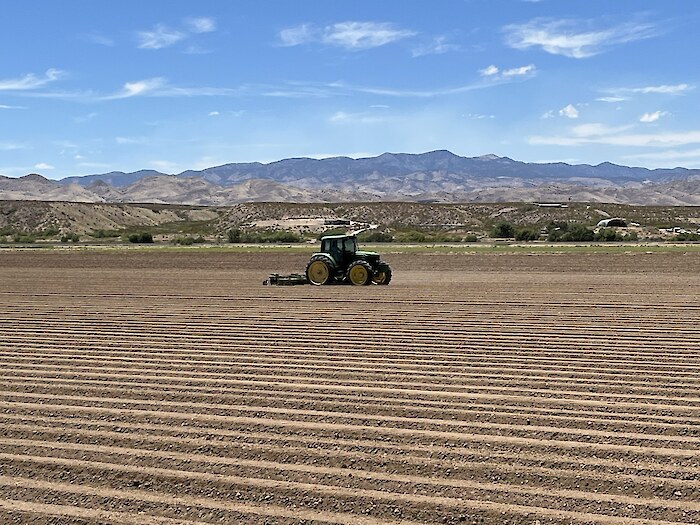
Agriculture surface water supply evaluates the surface water delivered to agricultural users.
How is it scored?
Data was gathered from the following irrigation districts: San Luis Valley Irrigation Region (SLV), Middle Rio Grande Conservancy District (MRGCD), Elephant Butte Irrigation District (EBID), and El Paso County Water Improvement District #1 (EPCWID). For each district, data included the amount of surface water diverted, the total and adjusted Potential Evapotranspiration (PET) for crops in the irrigated areas, and a range of irrigation efficiency factors, which represent: 1) losses in conveyance of water from rivers to farms; 2) non-productive water losses on farms; 3) unused deliveries (return flows).
For each region, the Surface Water Fraction was calculated as follows: The Annual Main Surface Water Diversion was divided by the adjusted Potential Evapotranspiration (PET) for crops in the irrigated areas. The resulting value was multiplied by an irrigation efficiency factor of 60%. This efficiency factor was selected because it represents the high side of the range for all districts. For example, for the MRGCD, the reported values range between "as high as 60%" and "30% between 1979-1999". This factor could be changed based on further reviews, considering that lower values will represent a lower surface water fraction and therefore impact the indicator scores negatively.
The Surface Water Fractions resulting from these calculations were scored against district-specific thresholds. Thresholds are based on the assumption that surface water should be enough to satisfy most of the agricultural water demands along with some fraction of other water sources, mainly groundwater, and therefore a surface water fraction between 0.9-0.72 gets the highest score, an “A”. For the SLV, EBID and EPCWID regions, the rest of the surface water fraction thresholds are based on a breakdown of equal intervals. For the MRGCD the thresholds are adjusted to account for the consideration that this region is more reliant on surface water than the other regions. Overall scores were weighted by the average annual irrigated area in each region.
